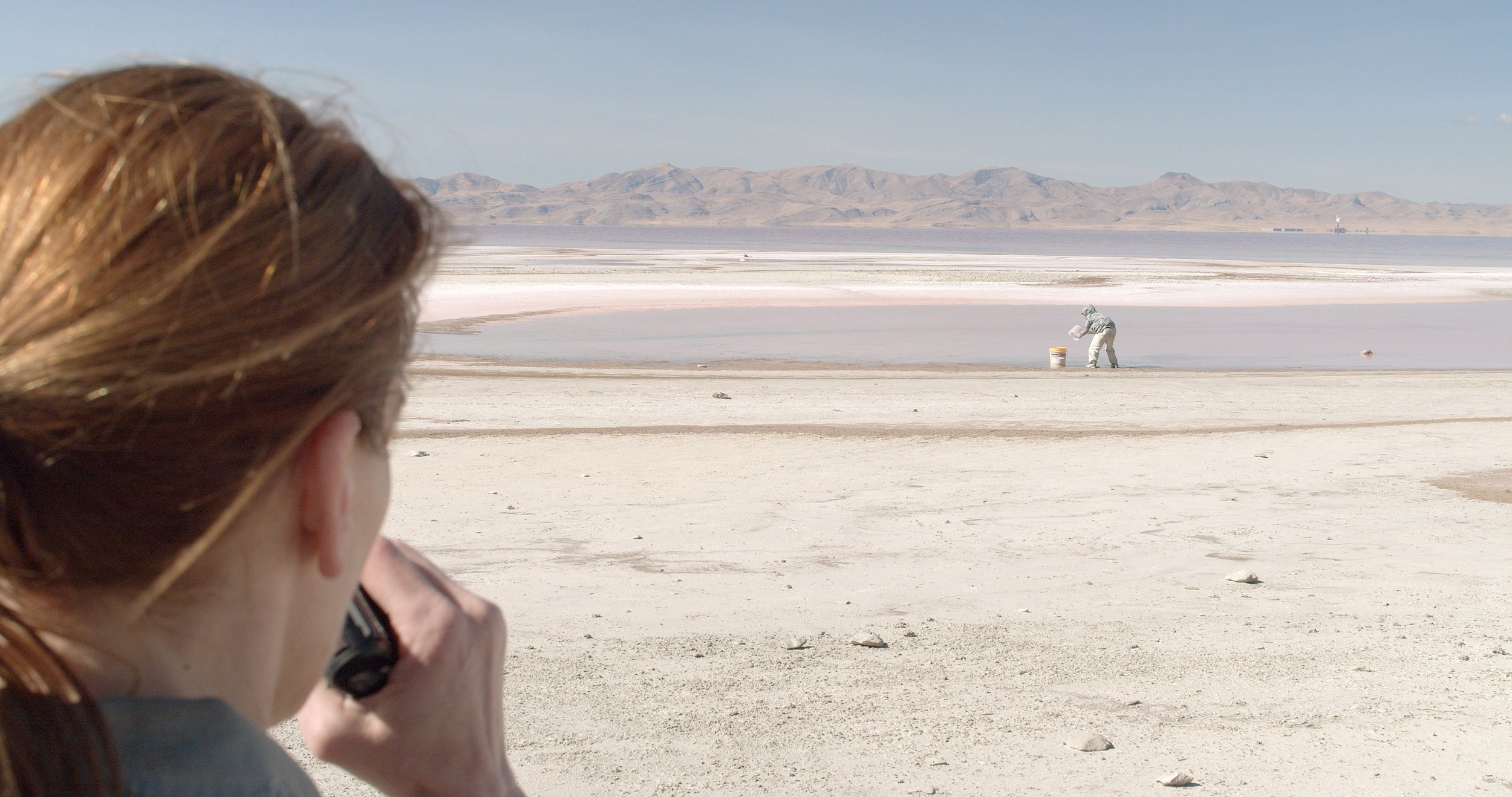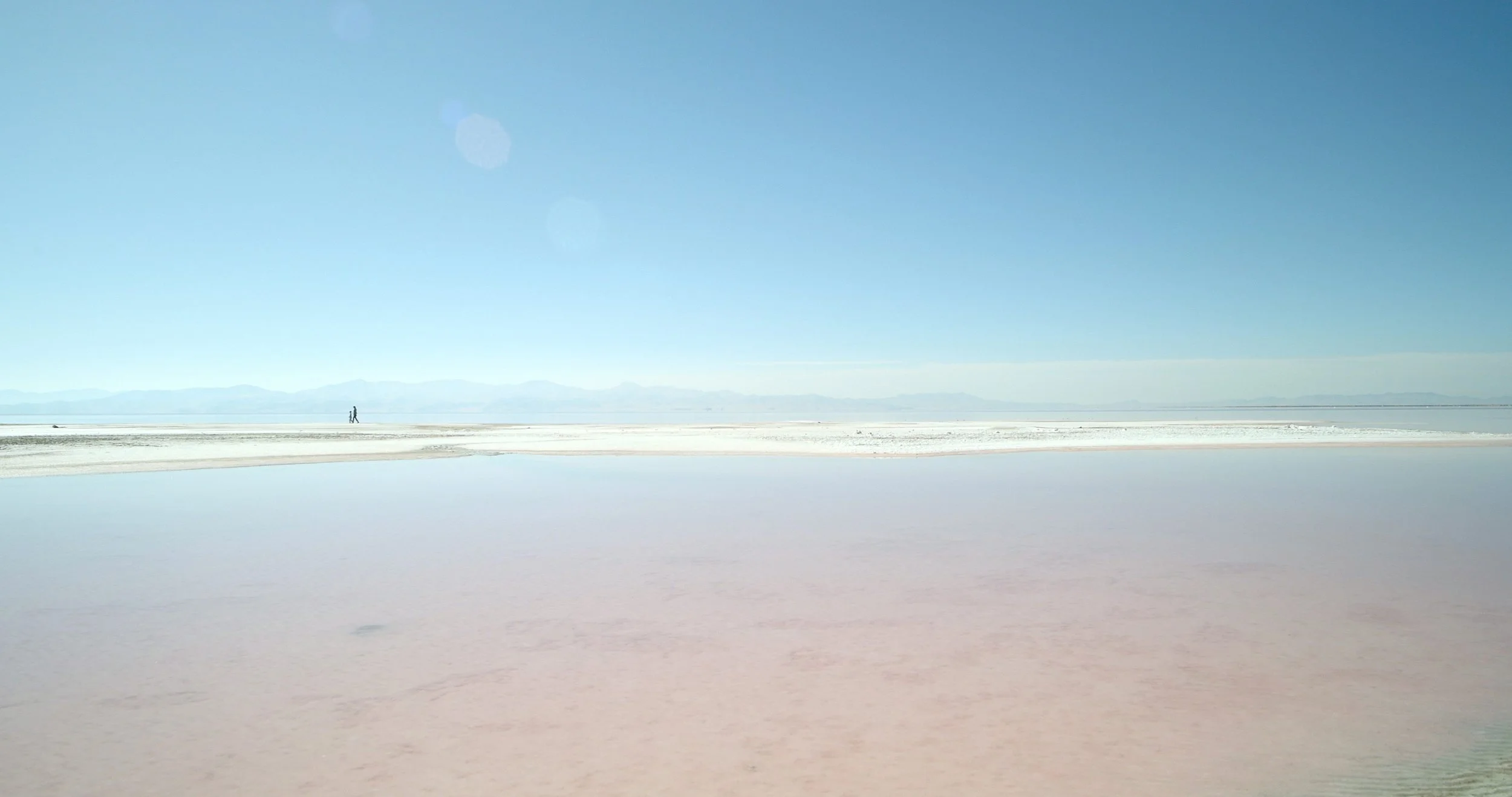Points of Return gathers works by twenty-five artists and creative collaborations from around the globe that explore wide ranging aspects of the climate emergency. In this online version of the exhibition you are encountering artworks illustrating some of the key challenges our planet faces, as we approach what many describe as a “point of no return” – from projects responding to the increasing wildfires in California, to the rapid decrease of kelp forests in that same region. From the important role played by marshlands in protecting the East Midlands of England to the deforestation of the Congo Basin rainforest. From disappearing ice at our poles, to the rapid spread of plastics into landscapes and waterways around the world. In just one century, we have fast-forwarded through warming which should have taken thousands of years. We have nearly doubled the volume of carbon in our atmosphere, increased methane levels two and a half times over, pushed up average sea-levels 8–9 inches / 20–23cm, and killed off over half our coral reefs. And yet, while it might seem that we are racing through a closing act, solutions remain within sight. The artists here offer commentary, reflection, and creative restorative strategies.
Essentially, this online exhibition brings to the surface the problematic relationship the human species has toward planet Earth and highlights how human activity, particularly since the beginning of the Industrial Revolution, has induced climate breakdown. Yet, we firmly believe there are reasons for optimism. The projects exhibited show that there are multiple paths and approaches that can be taken, in order to restore the environmental balance that we have destabilised. A La Luz (a project founded by artists Gonzaga Gómez-Cortázar and David Cass) believes that creative practitioners play a vital role. Through their work, they bring to light overlooked realities and nuances of the climate crisis, reminding us that, as Greta Thunberg puts it, ‘our house is on fire.’
Nature writer Barry Lopez wrote that ‘the mind, full of curiosity and analysis, disassembles a landscape and then reassembles the pieces.’ In this case, we could write that ‘the artist’, or ‘the creative mind, full of curiosity and analysis, disassembles a landscape and then reassembles the pieces.’ For, this is what each one of the artists in this online exhibition has done – focussed in one element or another, of our dismantling planet, and used their creativity to provide us, the audience, with an entry point framed by their interpretation of the data. This is climate breakdown of another sort, where providing entry points and accessible narratives is key.
Like the phases of an eclipse, the online presentation unfolds across six sections (Viewing Rooms), to describe a movement or rotation, coming full circle. It’s a journey through different planetary ecosystems, art disciplines and mediums. These artists have immersed themselves in jungles, marshlands, deserts, oceans, and forests. They have researched and captured how even the most remote and inaccessible environments have the fingerprints of human activity. These processes, explorations and reflections take on various formats – including video art, installation, sculpture, and photography.
The exhibition opens here at ground level, with Ulrika Sparre asking us to place our Ear to the Ground. Quite simply – to listen to our Earth’s non-human actors. As we progress through the exhibition, we lift our gaze. Spread throughout are glimmers of hope. Tanja Geis and Fiona Carruthers urge us to pay attention to our natural resources. Erin Woodbrey and Bethany Johnson promote the importance of sustainability through use of recycled, reclaimed, repurposed materials. And our closing artist is Miguel Jeronimo, whose stunningly effective project carries what could be considered the strongest strategy at our disposal in tackling the climate emergency – a shift in perspective.
Points of Return references the fact that, while we are close, we haven’t yet reached the dreaded “point of no return” – there are still opportunities to move toward a balanced, more sustainable and harmonious way of living. Artists are in a unique position, able to creatively present scientific findings in an accessible manner – raising vital awareness, inspiring collaboration and communal action. After all, if we are to solve the climate conundrum, we must all contribute. Collaboration is key. Planting those proverbial trees today, will indeed greatly benefit the lives of those who will follow us.










